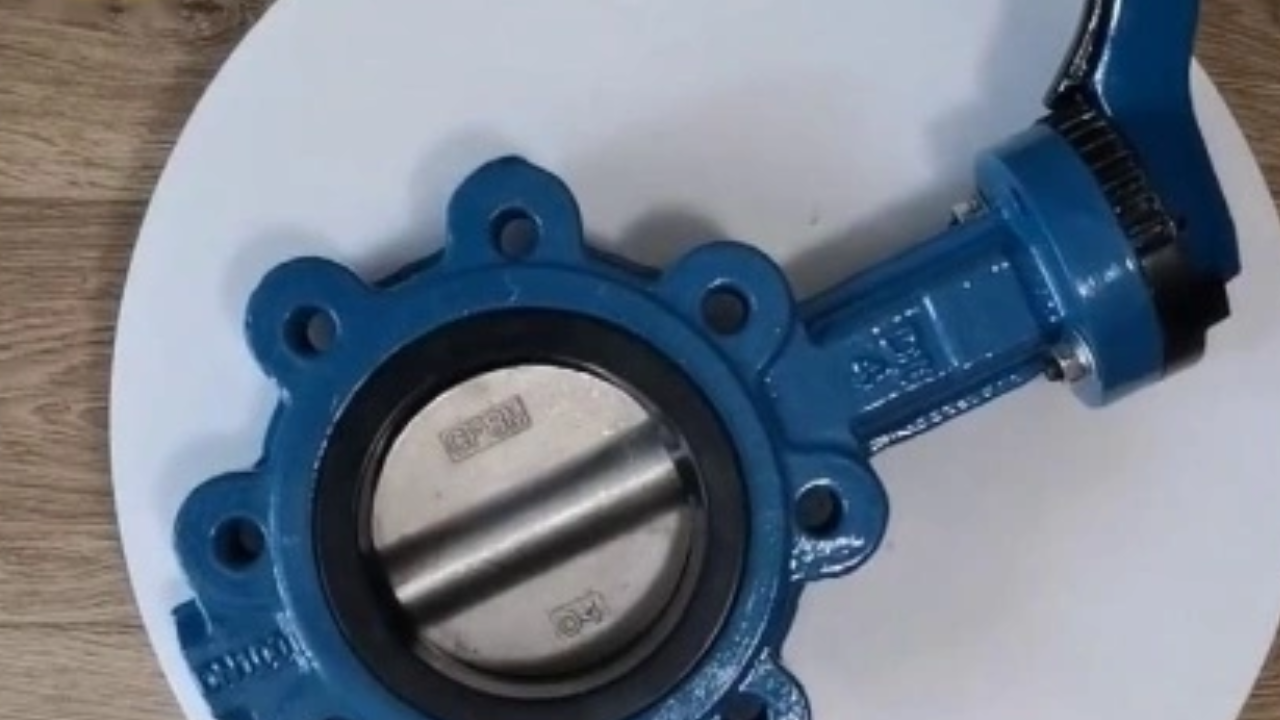Butterfly valves are flexible fluid control components that are noted for their ease of use and efficiency. These valves control flow by spinning a rotating disc, sometimes known as a “butterfly,” perpendicular or parallel to the direction of the fluid. They provide a quick and dependable shutdown, managing flow properly.
Butterfly valves are classified into three types: lug, wafer, and flanged, each designed to meet certain installation needs. Their streamlined form enables low-pressure dips and minimum turbulence, making them suitable for a wide range of industries, including water treatment and chemical processing.
Butterfly valves are available in a variety of materials, including stainless steel, PVC, and cast iron, to suit a wide range of operating situations. These butteryfly valves offer control options such as manual, gear-operated, and automated. Their versatility, cost-effectiveness, and ease of maintenance contribute to their extensive use in pipelines, enabling efficient fluid regulation and control.
Installation Methods of Lug-Type Butterfly Valves
In this article, we will delve into the detailed steps involved in installing Lug Type Butterfly Valves, covering everything from preparation to post-installation checks.
Pre-Installation Preparations
Before beginning the installation process, rigorous pre-planning is required. Begin by closely studying the valve specifications to ensure that the size and type are appropriate for the intended application. Confirm that the valve materials are compatible with the fluid being transferred, taking into account temperature and chemical composition. In addition, check the valve and related components for evidence of damage during shipping.
Valve Positioning and Alignment
Begin by finding the best placement of the Lug Type Butterfly Valve within the pipeline. Align the valve with the flow direction, ensuring that the arrow on the valve body indicating the flow direction matches the planned fluid flow. Proper alignment is crucial for obtaining peak performance and reducing needless stress on valve components. Furthermore, ensure that the flange sides are parallel, resulting in a smooth connection between the valve and pipeline.
Flange Attachment and Bolting
The valve’s lug-style mounting flanges allow for a secure and simple installation. Align the lugs on the valve flanges with the holes on the pipeline flanges for a precise fit. Insert bolts through the aligned holes and fasten them with nuts. Tighten the bolts carefully and evenly, beginning at opposite ends and progressing to the center. This consistent bolting technique promotes even pressure distribution, reducing the danger of distortion or misalignment.
Torque Application
The correct tension during bolt tightening is critical for the reliable operation of Lug Type Butterfly Valves. Refer to the valve manufacturer’s specifications for torque values based on valve size and material. Use a calibrated torque wrench to apply the proper torque to each bolt. Proper torque application ensures a uniform and secure connection, reducing leakage and extending the life of the valve.
Sealing Verification
After fastening the valve in place, conduct a complete sealing verification to ensure a leak-free connection. Visually inspect the valve seat, disc, and surrounding flanges for any anomalies. In addition, run a pressure test on the system to ensure that the valve and seals are in good working order. This procedure is critical for detecting and repairing any potential leaks before the valve is put into service.
Operational Checks and Calibration
Before putting the system into action, do a series of operational checks to ensure that the Lug Type Butterfly Valve functions properly. Ensure that the valve opens and shuts smoothly, with no undue resistance or abnormalities. If applicable, calibrate any position-indicating devices to match the actual valve position. This procedure ensures precise monitoring and control of the valve’s operation.
Post-Installation Documentation and Maintenance Planning
Document the installation process in detail, including torque values, sealing verification results, and any operational changes made during the installation. This documentation is a crucial resource for future maintenance and troubleshooting. Create a proactive maintenance plan that includes frequent inspections, lubrication of moving parts, and periodic torque checks. The Lug Type Butterfly Valve’s longevity and reliability can be increased by following a planned maintenance routine.
Final Words
To guarantee optimal performance in fluid control systems, Lug Type Butterfly Valves must be installed with accuracy, attention to detail, and strict adherence to manufacturer specifications. Each stage plays a key role in establishing a reliable and efficient connection between the valve and the pipeline. By following this comprehensive installation instruction, operators may help ensure the overall success and lifespan of these critical components in industrial applications.
